Where Does Jasmine Grow?
Jasmine thrives in various environments, from full sun to partial shade. It is a hardy tropical evergreen belonging to the family of Oleaceae. It is an aromatic flowering plant easily recognizable by its strong and sweet-smelling white blooms. While it can be cultivated outdoors, it is most commonly grown indoors. Jasmine has gained popularity and has been the topic of many articles for various reasons.
Table of Contents
Where Does Jasmine Grow Best?
Summer-flowering jasmine thrives in a sunny location. Other varieties, such as winter jasmine, prefer a more shady location or partial shade. Jasmine requires sandy, loamy soil that is well-drained but moist and moderately fertile. Jasmine bushes can be planted at any time between June and November. It needs to be spaced at least 8 feet apart, and sometimes, even more, depending on the variety, to allow for future root growth. It will grow tremendously and does not like to be crowded.
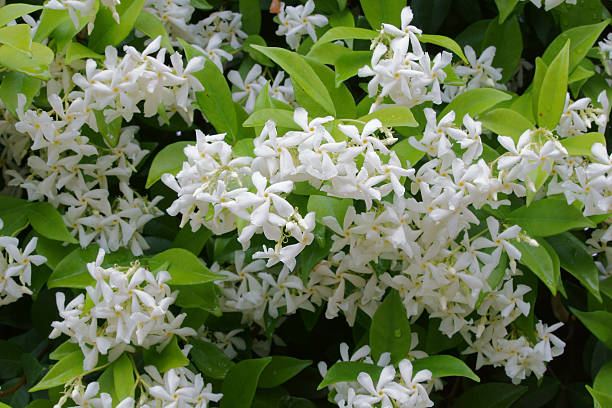
Where Does Jasmine Naturally Grow?
It is made up of approximately 200 species that are native to tropical and warm temperate regions of Eurasia, Africa, and Oceania, respectively. Southeast Asia and South Asia are the subregions with the greatest diversity.
More than two dozen jasmine species have become established in southern and eastern Mediterranean Europe. For example, the so-called Spanish Jasmine (Jasminum grandiflorum) came to be naturalized in the Iberian peninsula after being introduced from West Asia, the Indian subcontinent, Northeast Africa, and East Africa.
Invasive species in Hawaii and Florida include Jasminum fluminense (Jazmin de Trapo) and Jasminum dichotomum (Gold Coast Jasmine), native to South America.
Jasminum polyanthum, also known as White Jasmine, is an invasive weed in Australia that has spread throughout the country.
Where Does Jasmine Grow in the USDA Hardiness Zones?
According to the USDA, the majority of climbing vines in the Jasmine genus, which produce delicate, fragrant flowers, thrive in USDA plant hardiness zones 9-10.
Common Jasmine
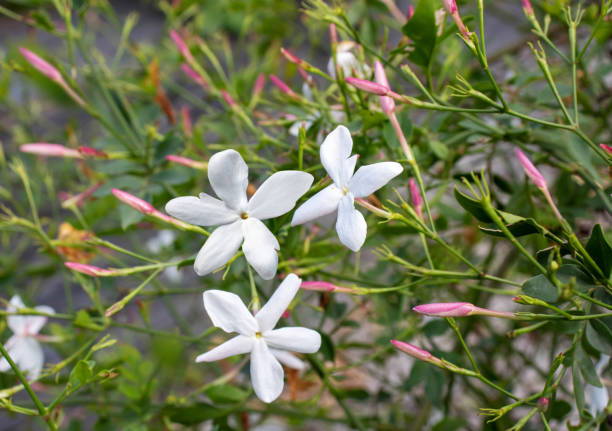
The common jasmine is renowned for its fragrant pale pink to white blossoms, which can fill an entire house or garden with a fragrant scent that lasts for days. It is a sprawling, twining deciduous vine that can reach heights of 20 to 30 feet and spread out to a width of 7 to 15 feet. The sweet smell of common jasmine, which can be grown in a container, is a welcome addition to a deck or patio, where butterflies and hummingbirds may be drawn to the plant.
According to the Missouri Botanical Garden, it grows in USDA zones 7-10. It is native to China, the Himalayas, and Asia Minor, among other places. Colder climates can benefit from this jasmine throughout the winter by bringing containers of it indoors in the late fall or early winter.
Primrose Jasmine
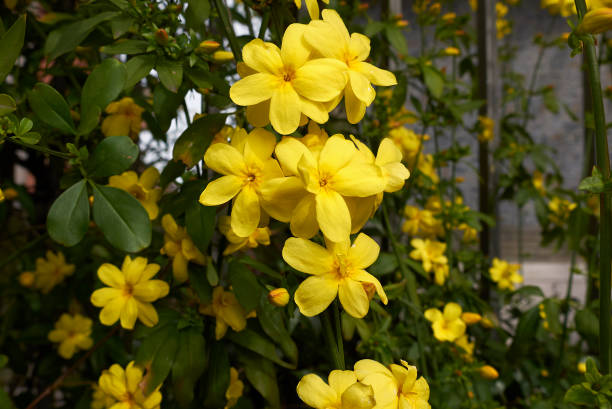
According to Oregon State University, it’s very similar to winter jasmine. Depending on the type, it grows into a huge mound up to 10 feet tall and wide. Tomato vine produces trumpet-shaped flowers that are sweet and fragrant in the summertime, and it can be trained to sprawl across fences or walls.
Showy Jasmine
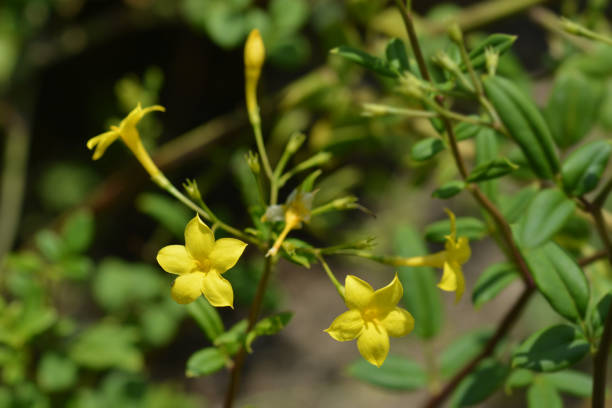
USDA zones 8 to 10 support the growth of two jasmine species. In the opinion of North Carolina State University, showy jasmine is a mounding evergreen to a semievergreen shrub that bears yellow flowers. It grows 3 to 5 ft high and 3 to 4 ft wide and produces yellow flowers. Drought, some shade, and sterile soil are all tolerated by this species.
Italian Jasmine Vine
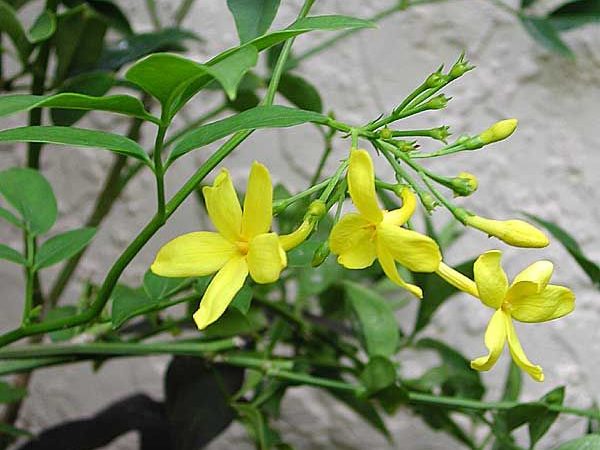
Known as Italian jasmine, this evergreen to semievergreen shrub grows in USDA zones 7 through 9. It forms a mound of slender stems that can reach 7 to 10 feet in USDA zones 7 through 9. It can handle both heat and drought. In the summer, it produces glossy blackberries and slightly fragrant yellow flowers that are slightly sweet in flavor. However, according to North Carolina State University, Italian jasmine is indigenous to southern Iran and central China, despite its common name.
Winter Jasmine
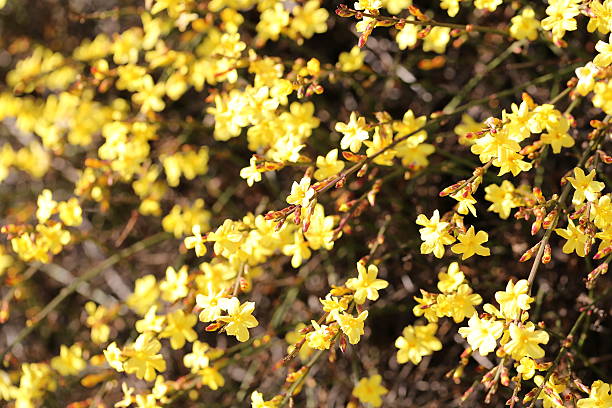
Winter jasmine has attractive willowy green stems that are attractive in the winter. It produces showy, bright yellow flowers in late winter or early spring, depending on the climate where it is grown. Winter jasmine, native to Northern China, blooms in the spring with yellow blooms. The vines require little maintenance and can even thrive in full shade, though they will produce fewer flowers due to this.
Winter jasmine is grown as a vine and can reach 10 to 15 feet. When grown as a mounding shrub, it can reach up to 4 feet and a spread of 3 to 6 feet. As the trailing branches of the arching shrub spread, the shrub’s roots are formed. It’s a beautiful ground cover for slopes or banks. It can be trained as a vine on a trellis or wall. According to the Missouri Botanical Garden, it thrives in USDA zones 6 through 10.
